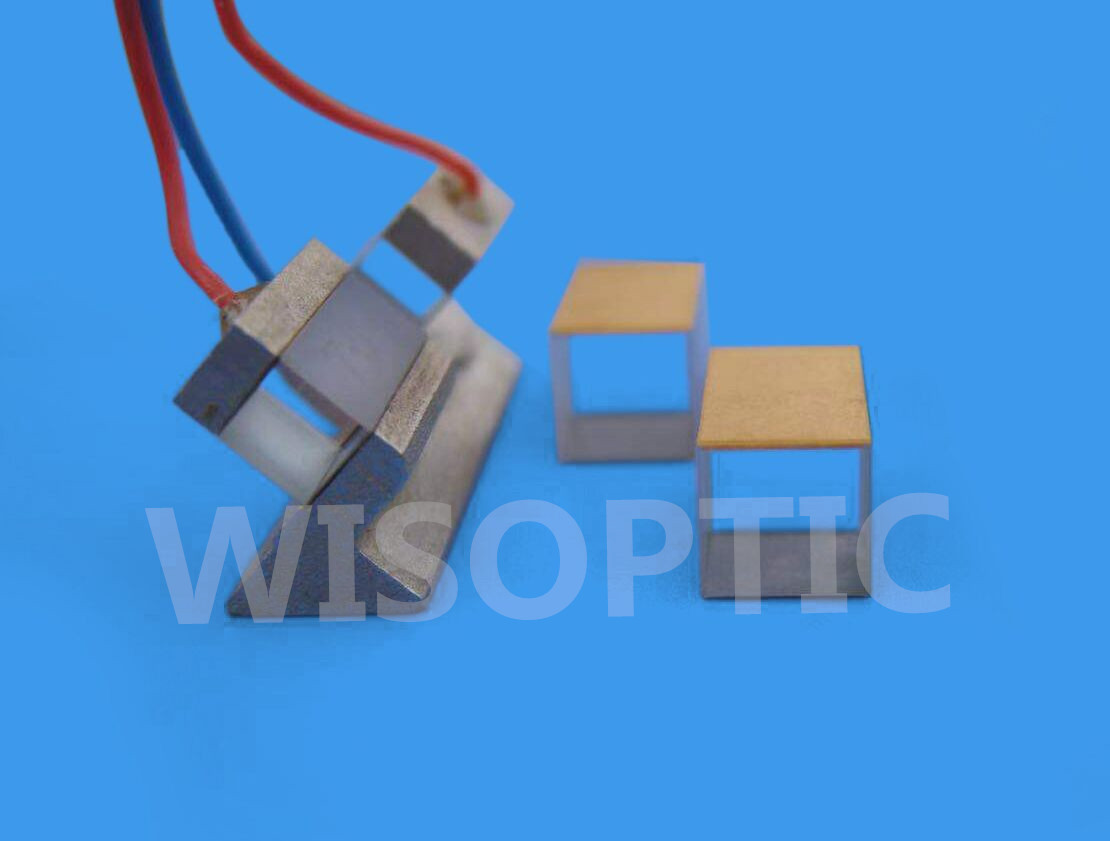Potassium titanium oxide phosphate (KTiOPO4, KTP for short) crystal is a nonlinear optical crystal with excellent properties. It belongs to orthogonal crystal system, point group mm2 and space group Pna21.
For KTP developed by flux method, the high conductivity limits its practical application in electro-optic devices. But KTP developed by hydrothermal method has much lower conductivity and is very suitable for E-O Q-switch.
Like RTP crystal, in order to overcome the influence of natural birefringence, KTP also need to be double-matched, which brings some problems to the application. In addition, the cost of hydrothermal KTP is too high due to its long crystal growth cycle and stringent requirements on growth equipment and conditions.
KTP Pockelse Cell Developed by WISOPTIC
With the development of laser technology in medical, beauty, measurement, processing and military applications, E-O Q-switched laser technology also presents a trend of high frequency, high power, high beam quality and low cost. The development of E-O Q-switched laser system has put forward higher requirements on the performance of E-O crystals.
E-O Q-switched crystals have long relied on traditional LN crystals and DKDP crystals. Although BBO crystals, RTP crystals, KTP crystals and LGS crystals have joined the application camp of E-O crystals, they all have some problems that are difficult to solve, and there is still no breakthrough research progress in the field of E-O Q-switched materials. In a long period, the exploration of E-O crystal with high E-O coefficient, high laser damage threshold, stable performance, high temperature applicability and low cost is still an important topic in the field of crystal research.
Post time: Nov-18-2021

